Index


Review: Socket 1366 is obsolete
This article is also available in German.
During our Mushkin 6GB Kit review, we thought about what happens if you use only two modules and how fast are all the settings compared to the 1156 platform.
So, we used the same modules with the same timings on the 1366 and 1156 platforms. We tested two channels vs three channels and compared that to the 1156 platform.
Testbed:
Motherboard:
Intel DX58SO "Smackover" (provided by Intel)
Intel X58/iCH10R
MSI X58 Eclipse SLI (provided by MSI)
Intel X58
MSI P55-GD65 (provided by MSI)
Intel P55
CPU:
Intel Core i7 920 (provided by Intel)
Intel Core i7 975XE (provided by Intel)
Intel Core i5 750 (provided by Intel)
CPU-Cooler:
Scythe Kama Angle (provided by Scythe-Europe)
Memory:
Mushkin 6GB Kit PC3-12800 (provided by Mushkin)
1600MHz CL8-8-8-24 CR1T 1.65V
Graphics Cards:
MSI R4850-2D1G-OC (provided by MSI)
Power supply:
PC Power & Cooling Silencer 500W (provided by PC Power & Cooling)
Hard disk:
Samsung F1 1000GB (provided by Ditech)
Case fans:
SilenX iXtrema Pro 14dB(A) (provided by PC-Cooling.at)
Scythe DFS122512LS (provided by Scythe-Europe)
Case:
Cooler Master Stacker 831 Lite (provided by Cooler Master)
As usual the synthetic benchmarks are not very reliable. During testing we found something interesting. When enabling or disabling the C-States you will get different results. We have contacted the guys from Everest to find out why this is, but it seems the energy savings have something to do with it. Here are the results with the P55-GD65:
C-States enabled, C3
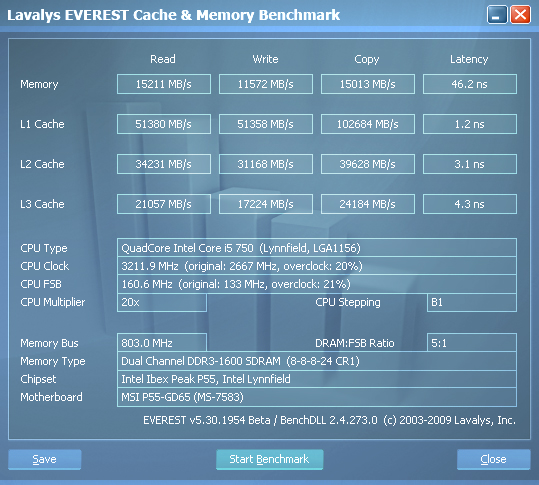
C-States disabled
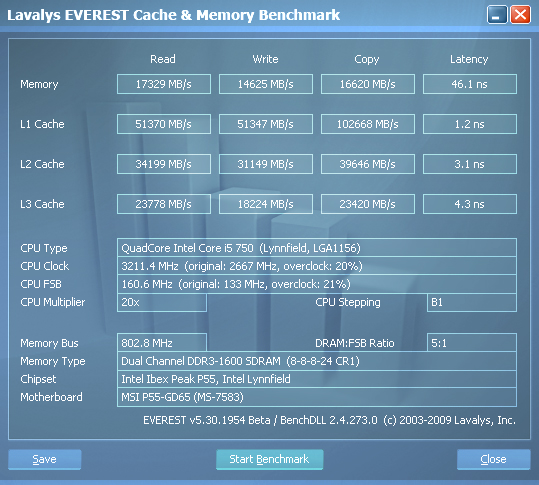
Because such benches are not reliable we have to do it the old fashioned way and test it with some applications.
As we can see, the differences between two channels and three channels are not as big as you might think. Also the latencies are much lower with only two channels populated. Because the Intel board was not able to run with 1600MHz at CL8, we switched to the MSI Eclipse SLI which did work well. It is not always possible to achieve higher memory speeds on the 1366 platform, because it is board and CPU dependent. Some CPUs may work better, while others will not. Socket 1156 CPUs are much easier to overclock and also can run higher memory speeds without too many problems. Also the performance increase comes mostly from the overclocked QPI.
two channels, 1600MHz:
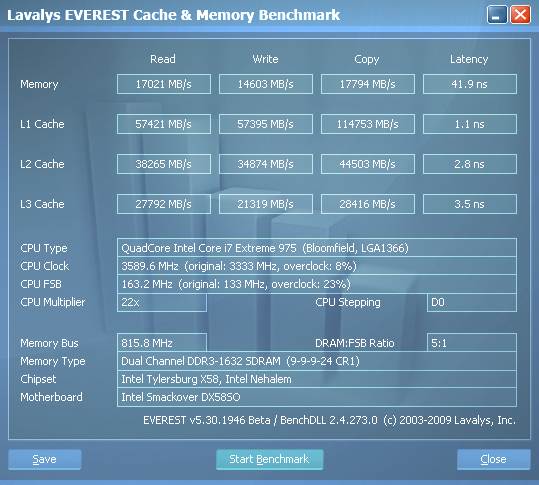
three channels, 1600MHz:
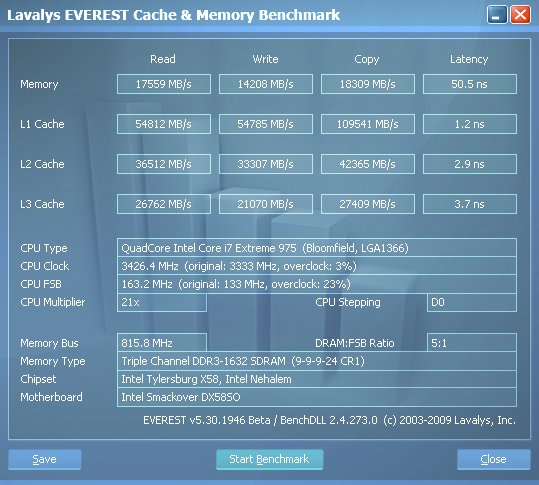
Lets test with some applications:
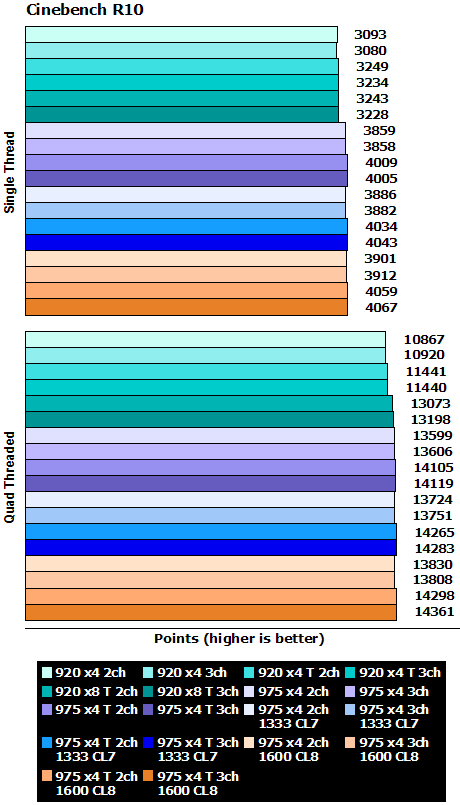
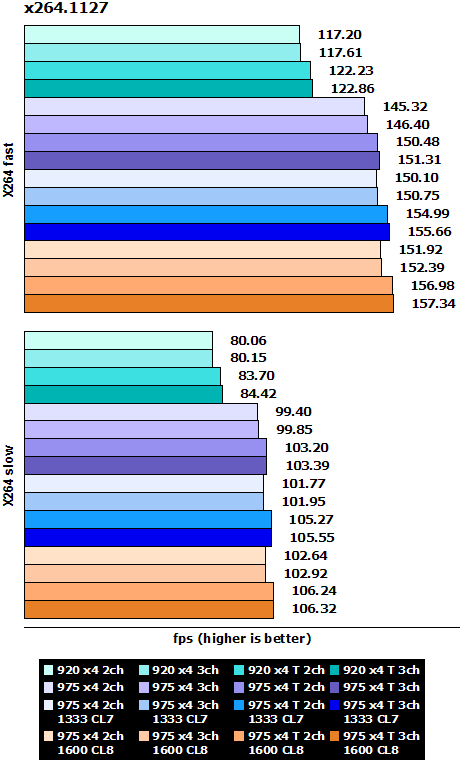
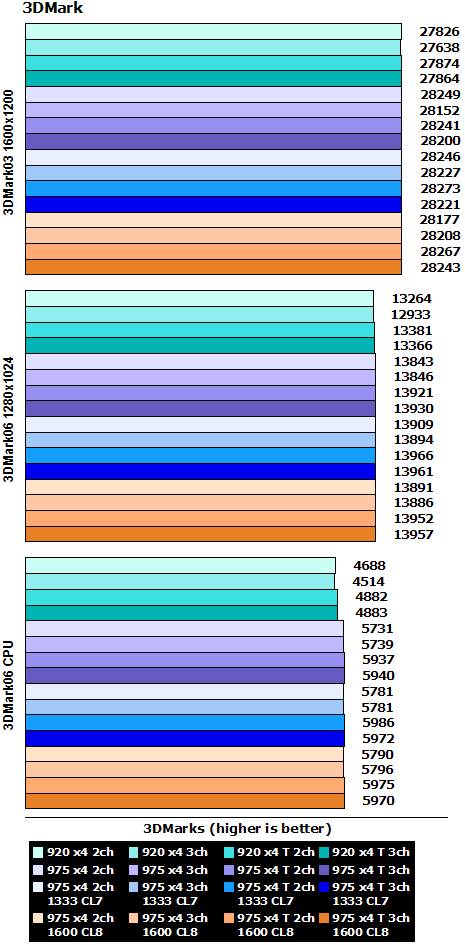
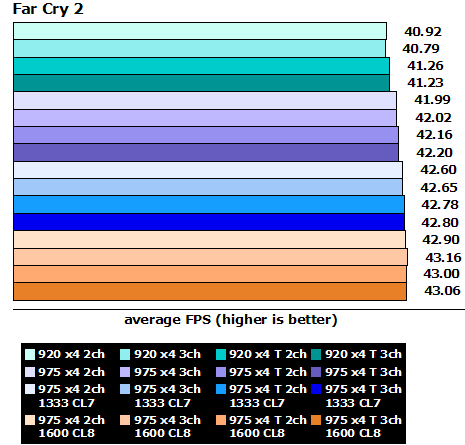
Let's see how two and three channels setups do in power-consumption tests. Please note that the MSI board which we used for 1600MHz CL8 does consume much less power compared to the Intel board. Also, you can see if you active the turbo mode on the 1366 platform, it gives you only a slight performance enhancement, but it does increase power consumption a lot. Also two channels do consume less power and make this configuration also more efficient.
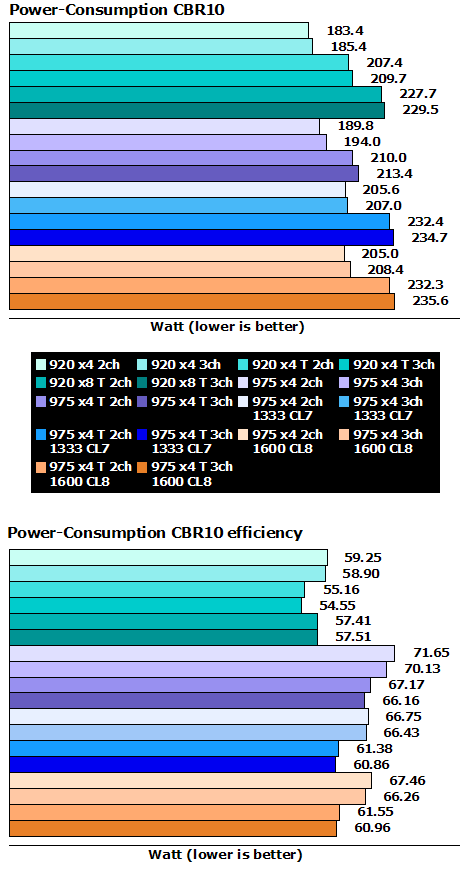
The 1156 platform has "only" a two channel memory architecture, but as we have seen at the 1366 platform, it's not a big disadvantage. Also the 1156 platform does have higher memory dividers and an official support for 1333MHz modules, which the 1366 platform lacks. It's a bit unfair to compare the i5 750 with its bigger brothers, but we would like to know if it can cope with them. Also note, the i5 750 CPU has a higher turbo mode which gives it the edge over the i7 920. We overclocked the i5 750 to 3.2G and 3.6G. At the highest settings we decided to go for a lower memory speed but with tighter timings which is overall faster. All benches have been run with C-States disabled.
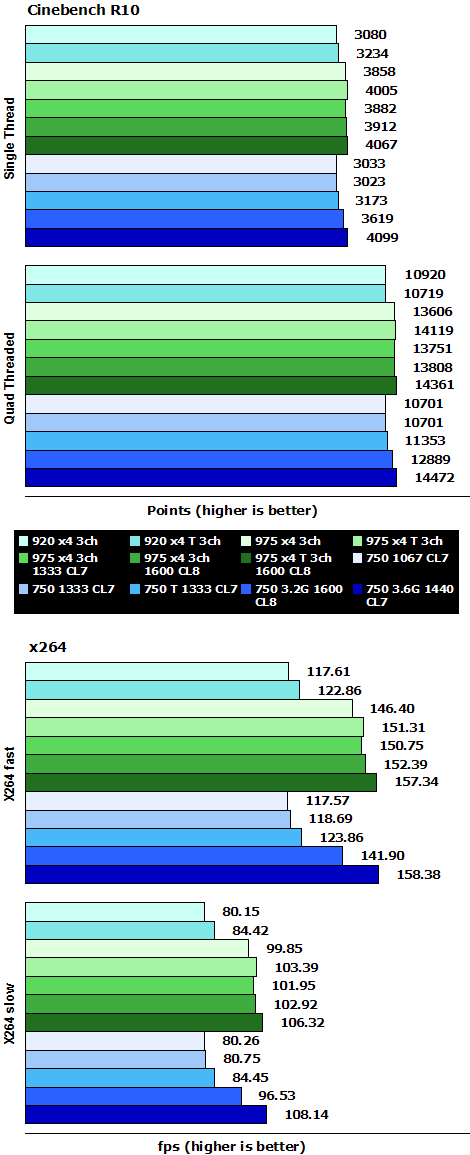
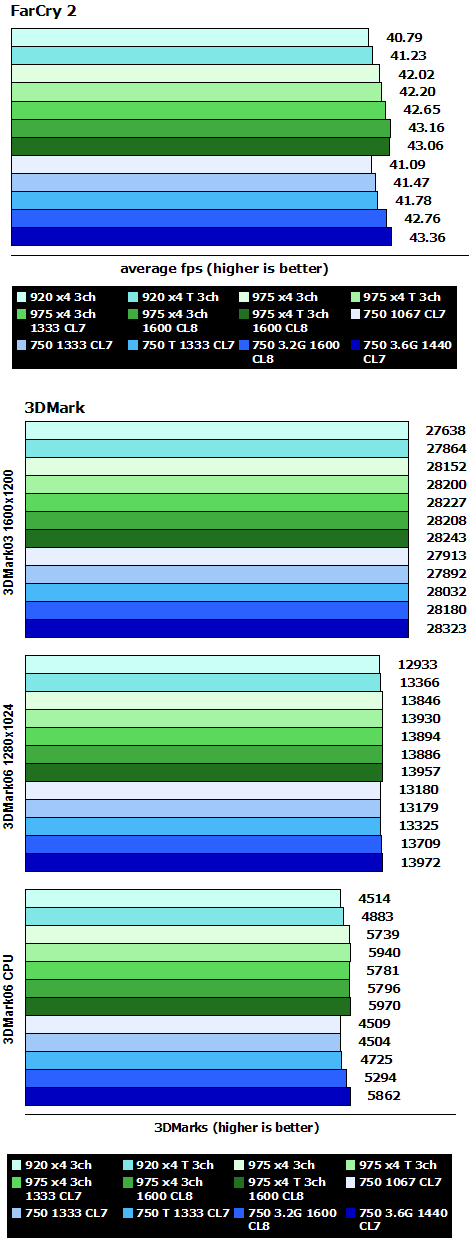
The i5 turbo mode does cost some energy, but much less compared to the i7 9xx. So the i5 CPU is always more efficient. Of course we used the most efficient board on the market which gives us some advantage. But MSI 975 with Turbo enabled compared to MSI at 3.6GHz overclocked, is also a win for the i5 CPU, because you don't need that much QPI voltage to run the memory at 1600MHz.

Conclusion
Let's keep it simple: the Socket 1366 platform is obsolete. The turbo modes are very limiting and the three channel memory setup gives only a slight advantage. Of course, Socket 1366 CPUs don't come cheap either. The quite new i5 CPU is much easier to overclock and it's not that hard to achieve higher memory speeds.
Considering system cost, then the P55 platform is the clear winner. We have already proven that Hyperthreading/SMT is more or less a marketing gimmick. It works only with very few applications and in highly optimized applications such as x264 or games, it decreases performance. That's also the reason why we did not consider to use the i7-800 CPU series for this review.
Looking for the best performance money can buy, we recommend the i5-750 CPU. If you need SLI or Crossfire, shop for boards with an additional NF200 chip to get the most out of your two graphics cards, otherwise the P55 does just fine.
